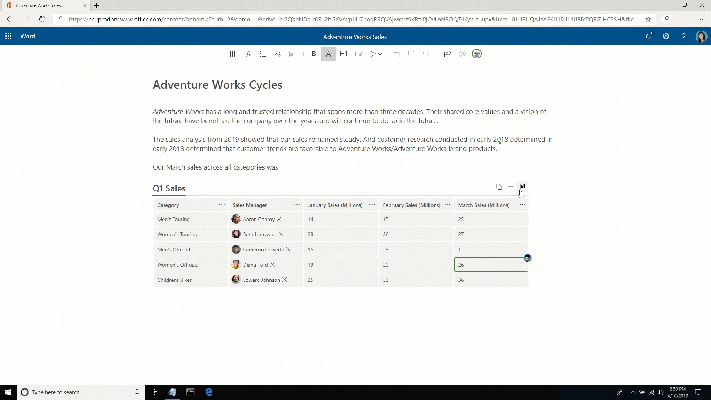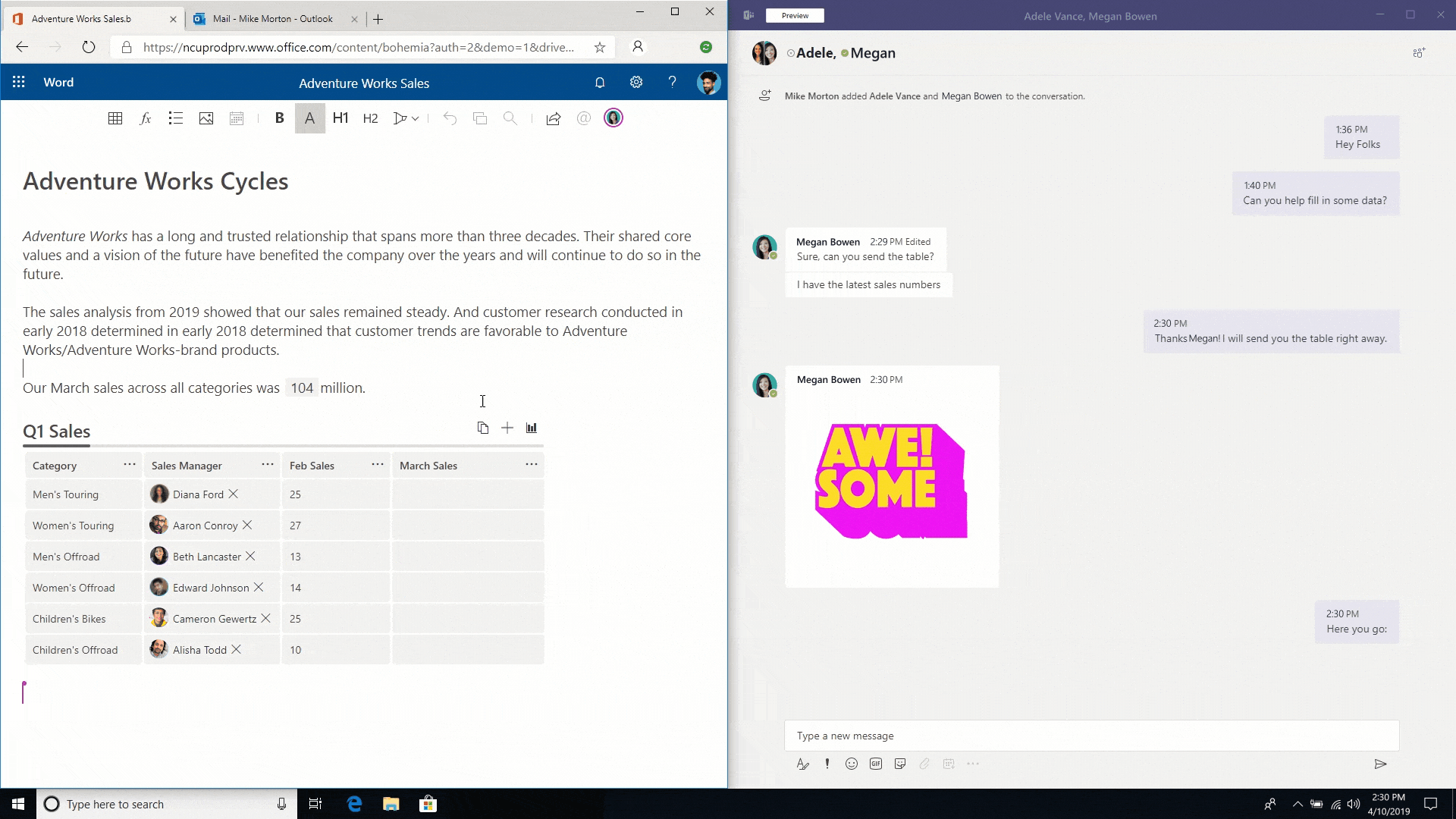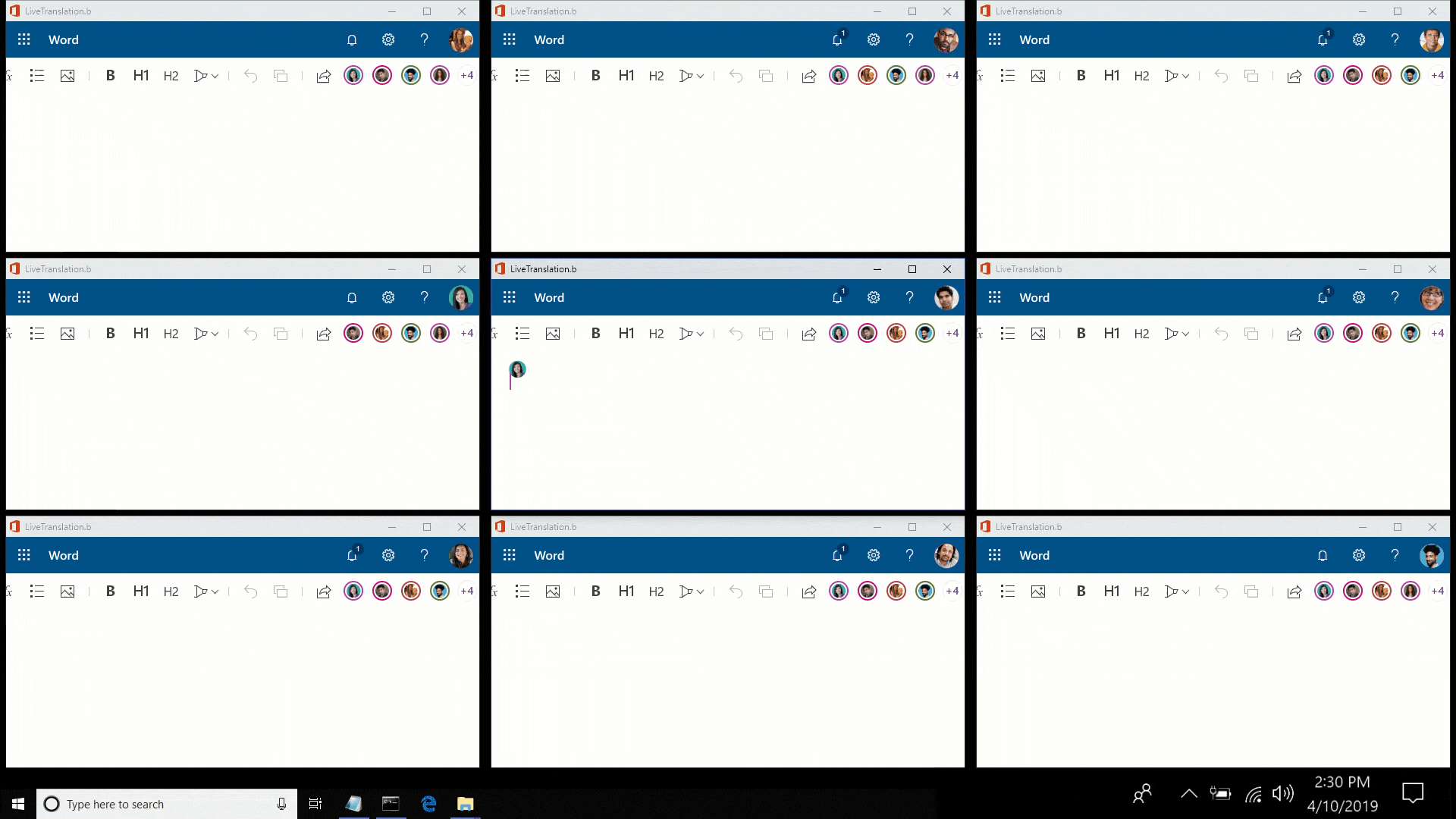At its Build developer conference, Microsoft today announced the Fluid Framework, a new software development kit that is meant to help developers build faster and more flexible distributed applications that will change the way people think about document and collaborative editing. Microsoft itself plans to integrate Fluid into some of its Office 365 applications later this year.
At its core, Fluid is a framework for building collaborative editing experiences, but because it can be integrated across applications, that also means that users will be able to, say, edit a document in an application like Word and then share a table from that document in Microsoft Teams (or even a third-party application like Slack, if Slack decided to integrate this technology). All of the changes sync in real time, of course.
In one of Microsoft’s demos, the company shows how a preview version of Word can’t just handle multiple simultaneous edits, but how users could use formulas to calculate a cell in a spreadsheet inside the text document to calculate a number that is then automatically updated.
In another example, Microsoft shows how developers can create a document that is then automatically translated in real-time to a variety of languages, while still allowing everybody to edit it in their own language.
Collaborative editing isn’t new, of course, but Microsoft promises that the Fluid Framework will sync faster than anything else currently on the market and, what’s maybe more important, give developers the tools to deconstruct and reconstruct documents into different modular components so that they can then be integrated into different applications.
What’s maybe even more interesting is that in a press briefing ahead of today’s announcement, Microsoft PR head honcho Frank X. Shaw described Fluid as a way to “break down the barriers of the traditional document as we know it, and usher in the beginning of the free-flowing canvas.” And indeed, the Fluid Framework isn’t just about collaborative editing but it’s really a rethinking of how modern documents should work.
Some startups like Coda, Airtable and more established players like Smartsheet are putting some pressure on Microsoft to rethink its productivity suite by offering modern takes on document editing. That’s something Microsoft has to react to, but it’s also part of the company’s recent push to modernize its applications to better match how employees work today.



